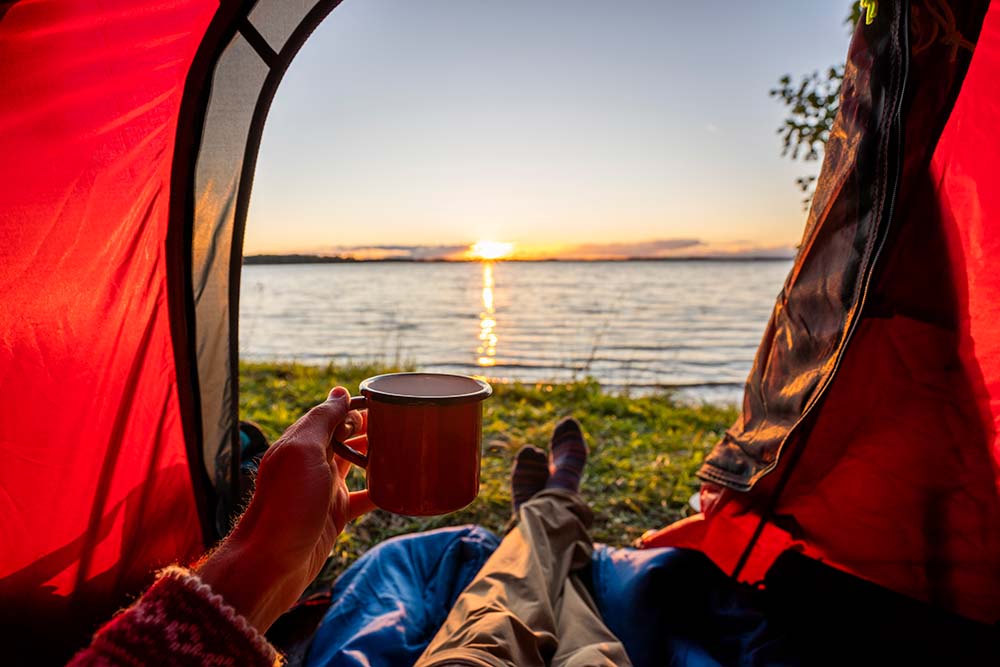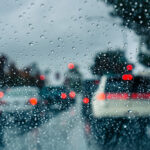
Wild camping, also known as primitive camping or backcountry camping, refers to the activity of setting up camp in natural environments outside of designated campsites and established facilities. Unlike traditional camping, which often takes place in designated areas with amenities, wild camping allows individuals to experience the raw beauty of nature while immersing themselves in remote locations away from crowds and modern conveniences.
Introduction to Wild Camping
Imagine waking up to the gentle sounds of birds singing, surrounded by lush greenery, and breathing in the fresh scent of the wilderness. This is the allure of wild camping, a thrilling outdoor adventure that offers a break from the hustle and bustle of everyday life. In this article, we will explore what wild camping is, its benefits, essential equipment, choosing the right location, setting up camp, campfire and cooking tips, Leave No Trace principles, safety considerations, and how to make the most of your wild camping experience.
What are the benefits of Wild Camping?
Connecting with Nature
One of the primary attractions of wild camping is the opportunity to connect with nature on a deeper level. Far away from the distractions of modern life, you can immerse yourself in the sights, sounds, and serenity of the natural world. Whether it’s the majestic mountains, tranquil lakes, or sprawling forests, wild camping allows you to appreciate the beauty and wonder of the great outdoors.
Freedom and Adventure
Wild camping offers a sense of freedom and adventure that is often lacking in traditional camping experiences. With no set boundaries or predefined itineraries, you have the freedom to explore and discover hidden gems in nature. Every wild camping trip becomes an exciting adventure, as you navigate through uncharted territory and create unforgettable memories along the way.
Cost-Effective
In addition to the intrinsic rewards, wild camping is also a cost-effective way to enjoy the outdoors. Unlike staying at established campsites or resorts, which can be expensive, wild camping allows you to camp for free in most cases. All you need is the right equipment and a sense of adventure, making it an accessible option for individuals and families looking to experience the beauty of nature without breaking the bank.
What Equipment do I need for Wild Camping?
Before embarking on a wild camping trip, it’s important to ensure you have the necessary equipment to stay safe and comfortable in the outdoors. Here are some essential items you should consider packing:
Tent and Sleeping Bag
A reliable tent and a quality sleeping bag are essential for a comfortable night’s sleep in the wilderness. Choose a tent that is lightweight, easy to set up, and durable to withstand various weather conditions. Likewise, invest in a sleeping bag that suits the expected temperature range of your camping destination.
Cooking Gear and Food
Pack lightweight cooking gear such as a portable stove, cookware, and utensils. Plan your meals in advance and pack non-perishable food items that are easy to prepare and store. Consider lightweight and compact options to minimize the weight of your backpack.
Navigation Tools and Maps
To navigate safely in the wilderness, carry navigation tools such as a compass, map, and GPS device. Familiarize yourself with the area before your trip and have a backup plan in case of unexpected detours or changes in weather conditions.
First Aid Kit and Personal Items
Safety should be a top priority when venturing into the wilderness. Pack a comprehensive first aid kit that includes essential supplies for treating minor injuries, such as bandages, antiseptic ointment, and pain relievers. Additionally, bring personal items such as sunscreen, insect repellent, and toiletries to ensure your comfort during the trip.
How do I Choose a Wild Camping Location?
Selecting the right location for your wild camping adventure requires careful consideration. Here are some factors to keep in mind:
Researching Local Regulations
Before heading out, research local regulations regarding wild camping. Some areas may have specific rules or restrictions in place to protect the environment or ensure visitor safety. Familiarize yourself with these guidelines and obtain any necessary permits or permissions.
Considering Safety and Accessibility
Choose a location that is safe and accessible for your skill level and physical abilities. Evaluate the terrain, weather conditions, and potential hazards in the area. Be aware of any wildlife presence or potential risks associated with the chosen location.
Assessing Environmental Impact
When selecting a wild camping spot, consider the potential impact on the environment. Choose areas where camping is permitted and avoid fragile ecosystems or protected habitats. Minimize your footprint by following Leave No Trace principles, which we will discuss in more detail later.
How do I Set up Camp?
Once you have chosen a suitable location, it’s time to set up camp and create your temporary home in the wilderness. Follow these steps for a successful camp setup:
Finding a Suitable Spot
Look for a flat, level area free from rocks, roots, or other uncomfortable terrain. Consider factors such as natural windbreaks and proximity to water sources. Take care not to damage vegetation or disturb wildlife habitats when choosing your campsite.
Pitching the Tent
Follow the instructions provided with your tent to pitch it securely. Ensure the tent is well-anchored to withstand potential wind or rain. Check for any potential hazards or sharp objects that could damage the tent floor.
How do I Create a Comfortable Campsite?
Make your campsite cosy and functional by organizing your gear and creating designated areas for cooking, eating, and relaxation. Set up a tarp or groundsheet under your tent to provide an additional layer of protection from moisture.
Campfire and Cooking Tips
A campfire adds warmth, ambiance, and the opportunity to cook delicious meals while camping. Here are some tips for a safe and enjoyable campfire experience …
Gathering Firewood Responsibly
When collecting firewood, use fallen branches and twigs rather than cutting live trees. Respect the natural environment and leave no trace of your presence. Use only designated fire rings or fire pits when available.
Campfire Safety Guidelines
Follow local regulations and guidelines for campfires. Keep the fire small and manageable, ensuring it is at a safe distance from tents and other flammable materials. Never leave a campfire unattended and extinguish it completely before leaving.
Preparing and Cooking Meals
Use a camping stove or grill for cooking to minimize the impact on the environment. Pack lightweight and easy-to-prepare meals that require minimal cooking time. Store food properly to prevent attracting wildlife to your campsite.
Leave No Trace Principles
As outdoor enthusiasts, it is our responsibility to minimize our impact on the environment while enjoying wild camping. Follow these Leave No Trace principles:
Minimising Impact on the Environment
Stay on designated trails and avoid trampling vegetation. Do not disturb wildlife or their habitats. Avoid leaving any litter behind and pack out all trash, including food waste.
Proper Waste Disposal
Dispose of waste properly by packing out everything you bring into the wilderness. This includes food scraps, wrappers, and hygiene products. Use biodegradable soap for washing dishes and personal hygiene, and disperse grey water at least 200 feet from water sources.
Respect for Wildlife and Vegetation
Observe wildlife from a distance and avoid feeding or approaching them. Respect the natural behaviour of animals and do not disrupt their habitats. Similarly, refrain from picking flowers, damaging plants, or disturbing natural formations.
Safety Considerations
While wild camping offers an incredible outdoor experience, it’s important to prioritize safety. Consider the following precautions:
Informing Someone About Your Plans
Before embarking on your wild camping trip, inform a trusted person about your plans, including your intended route and estimated return date. This provides an additional layer of safety in case of emergencies or unexpected situations.
Weather and Emergency Preparedness
Check weather forecasts and prepare accordingly. Pack appropriate clothing and gear to protect yourself from extreme temperatures or adverse conditions. Carry a reliable communication device, such as a fully charged cell phone or a satellite communication device, in case of emergencies.
Wildlife Encounters and Precautions
Research the wildlife that may inhabit the area and educate yourself on their behaviours. Store food securely to prevent attracting animals to your campsite. Be cautious and respectful when encountering wildlife, keeping a safe distance, and avoiding any sudden or threatening movements.
Making The Most Of Your Wild Camping Experience
While wild camping requires preparation and caution, it also offers unparalleled opportunities for exploration, self-reflection, and adventure. Make the most of your experience by:
Exploring the Surroundings
Take the time to explore the natural beauty around you. Hike nearby trails, swim in pristine lakes, or simply sit and soak in the tranquillity of the wilderness. Immerse yourself in the sights and sounds of nature.
Engaging in Outdoor Activities
Wild camping opens doors to a wide range of outdoor activities. Depending on the location, you can indulge in activities like fishing, kayaking, bird watching, or stargazing. Embrace the freedom and possibilities that come with being in nature.
Embracing Solitude and Self-Reflection
Wild camping provides an opportunity to disconnect from the noise and distractions of modern life. Embrace the solitude and use this time for self-reflection, introspection, and reconnecting with your inner self. Allow the peace and quiet to rejuvenate your mind and spirit.
Is Wild Camping For Me?
Wild camping offers a unique and exhilarating way to experience the beauty of nature. It allows us to reconnect with the wilderness, explore remote locations, and create lasting memories.
By following the principles of Leave No Trace, practicing safety precautions, and embracing the spirit of adventure, we can enjoy the wonders of wild camping while ensuring the preservation of our natural environment for future generations to cherish.
Wild Camping FAQS
1. Is wild camping legal in the UK?
Wild camping is not legal everywhere in the UK. The laws regarding wild camping vary between the different countries within the UK—England, Scotland, Wales, and Northern Ireland—and even within specific regions or areas. Here’s a general overview:
- England: Wild camping is generally not legal in England, as it is mostly prohibited on privately owned land without the landowner’s permission. However, there are some areas where wild camping is allowed with certain restrictions, such as Dartmoor National Park and parts of the Lake District.
- Scotland: Wild camping is permitted under the Scottish Outdoor Access Code, which gives people the right to camp on most unenclosed land in Scotland. However, there are guidelines to follow, such as camping in small groups, staying for a limited time, and leaving no trace. Some specific areas may have bylaws or restrictions, so it’s advisable to check for any local regulations.
- Wales: Wild camping is generally not permitted in most parts of Wales, unless you have the landowner’s permission. However, there are a few areas where wild camping is allowed, such as parts of the Brecon Beacons National Park and Snowdonia National Park.
- Northern Ireland: Wild camping is generally not legal in Northern Ireland, except in some specific areas where landowners allow it. It’s essential to seek permission from the landowner before camping.
It’s important to note that even in areas where wild camping is allowed, certain rules and guidelines must be followed, such as respecting the environment, leaving no trace, and camping responsibly. It’s always a good idea to research and familiarize yourself with the local regulations and guidelines before engaging in wild camping in any part of the UK.
2. Do I need previous camping experience to try wild camping?
While previous camping experience can be helpful, it’s not necessary. However, it’s essential to be well-prepared, have the right equipment, and educate yourself about the chosen camping location.
3. Can I have a campfire while wild camping in the UK?
The regulations regarding campfires while wild camping in the UK depend on the specific location and the country within the UK. Here’s an overview:
- England: In general, campfires are not permitted during wild camping in England. Open fires are often prohibited due to the risk of wildfires and potential damage to the environment. However, some designated campsites or areas may provide fire pits or allow controlled campfires. It’s essential to check the specific rules and guidelines of the area where you plan to camp.
- Scotland: In Scotland, campfires are usually permitted during wild camping as long as they are small, controlled, and do not cause any damage to the environment. However, there may be restrictions during certain times of the year, such as during dry periods or in sensitive areas. It’s crucial to follow the Scottish Outdoor Access Code and exercise caution when lighting a campfire.
- Wales: In most parts of Wales, campfires are generally not allowed during wild camping. Similar to England, the risk of wildfires and environmental damage is a concern. However, designated campsites or areas may provide facilities for controlled campfires. Always check the specific rules of the area you plan to camp in.
- Northern Ireland: Campfires are typically not allowed during wild camping in Northern Ireland. As with other regions, the risk of wildfires and environmental damage is a significant factor. Seek permission from the landowner and adhere to any specific guidelines or regulations if campfires are permitted.
Remember, even if campfires are permitted, it’s crucial to follow safety guidelines, use designated fire pits when available, and ensure that the fire is fully extinguished before leaving the area. Additionally, always respect the local environment and be mindful of any fire bans or restrictions that may be in place at the time of your camping trip.
4. How can I find suitable wild camping locations in the UK?
There are various resources available to find suitable wild camping locations, such as online forums, camping websites, and guidebooks. Additionally, local outdoor enthusiasts or park rangers can provide valuable insights.
Finding suitable wild camping locations in the UK can be done through various resources and methods. Here are some ways to find potential spots for wild camping:
- Online research: Utilise online platforms and websites dedicated to camping and outdoor activities. Websites such as wildcamping.co.uk, coolcamping.com, and pitchup.com provide information and recommendations for wild camping locations in the UK. These platforms often include user reviews, photographs, and details about the facilities available.
- Ordnance Survey maps: Ordnance Survey (OS) maps are excellent resources for identifying potential wild camping spots. OS Explorer and OS Landranger maps offer detailed information on the topography, land ownership, footpaths, and campsites in specific areas. Look for areas with open access land or those designated for camping.
- Guidebooks and travel guides: Many guidebooks and travel guides focusing on camping and outdoor activities in the UK provide insights and recommendations for wild camping locations. Books such as “Wild Camping: Exploring and Sleeping in the Wilds of the UK and Ireland” by Stephen Neale or “Cool Camping Britain” by Jonathan Knight can offer valuable information and suggestions.
- Local knowledge and communities: Engage with local outdoor enthusiasts, camping clubs, or online forums dedicated to camping and hiking in the UK. These communities often share tips, recommendations, and first-hand experiences of wild camping locations. They can provide valuable insights into lesser-known or hidden spots that may not be widely documented.
- National Park websites: Check the official websites of National Parks in the UK, such as the Peak District, Lake District, Snowdonia, or the Cairngorms. These websites often provide information on wild camping policies, designated camping areas, and recommendations for suitable locations within the parks.
Remember, when identifying potential wild camping spots, consider factors such as access to water, safety, proximity to footpaths, and the Leave No Trace principles to ensure minimal impact on the environment. Always check local regulations, respect private property, and obtain necessary permissions if required before setting up camp.
5. What are some alternative options to wild camping?
If wild camping is not your preferred option or is not available in the area you plan to visit, there are several alternative options for camping in the UK. Here are some popular alternatives:
- Campsites: There are numerous campsites throughout the UK that cater to different preferences and levels of facilities. From basic sites with minimal amenities to fully equipped sites with showers, electricity hook-ups, and recreational facilities, you can choose a campsite that suits your needs. Websites like pitchup.com and coolcamping.com provide comprehensive listings of campsites across the UK.
- Caravan and motorhome parks: If you have a caravan or motorhome, you can explore dedicated caravan parks and motorhome sites. These locations offer specific facilities and services tailored to these types of accommodation, including electricity hook-ups, waste disposal points, and sometimes even recreational facilities like swimming pools and playgrounds.
- Glamping: Glamping, a combination of “glamorous” and “camping,” offers a more luxurious camping experience. Glamping sites provide pre-pitched tents, yurts, cabins, or other unique accommodation options that come with comfortable beds, heating, and sometimes even private bathrooms. Glamping sites can be found across the UK and provide a more comfortable and hassle-free camping experience.
- Bothies: Bothies are basic mountain huts or shelters found in remote areas, often in the Scottish Highlands. They provide simple accommodation and are usually maintained by charitable organizations. Bothies offer a rustic and communal experience for hikers and backpackers but require adherence to bothy etiquette and certain rules.
- Caravan and camping clubs: Joining a caravan and camping club, such as The Camping and Caravanning Club or the Caravan and Motorhome Club, can offer access to their network of club sites. These sites often provide well-maintained facilities, including showers, toilets, and recreational amenities, and can be found in various locations across the UK.
- Youth hostels: The Youth Hostel Association (YHA) operates youth hostels throughout the UK. These hostels offer affordable accommodation options, including private rooms or dormitories, and often have communal kitchens, lounges, and dining areas. While not traditional camping, youth hostels can be a convenient and budget-friendly alternative.
These alternatives provide different levels of comfort, amenities, and experiences, allowing you to choose an option that aligns with your preferences and desired camping experience.




